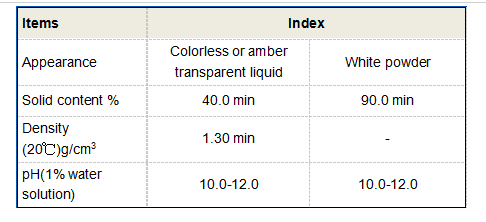Applications of Poly Aluminium Chloride in Water Purification Processes
Poly Aluminium Chloride A Versatile Agent in Water Treatment
Water is an essential resource for life, and ensuring its quality is a priority for public health and the environment. One of the critical components in the water treatment process is the use of coagulants to remove impurities and pollutants. Among the various coagulants available, Poly Aluminium Chloride (PAC) has emerged as a highly effective and widely used solution in the water treatment industry. This article explores the properties, uses, and benefits of PAC in water treatment processes.
Understanding Poly Aluminium Chloride
Poly Aluminium Chloride is an inorganic polymer that is produced by the hydrolysis of aluminium chloride in the presence of a base. It appears as a pale yellow, slightly viscous liquid or white powder, depending on its form. PAC is known for its high charge density and low molecular weight, which makes it more efficient than traditional coagulants like aluminum sulfate or ferric chloride.
Mechanisms of Action
The primary mechanism by which PAC operates in water treatment is through coagulation and flocculation. When PAC is added to water, it dissociates and forms positive charges that neutralize the negative charges on suspended particles, such as sediment, organic matter, and bacteria. This neutralization process allows the particles to aggregate or clump together, forming larger flocs. Subsequently, these flocs can either sink to the bottom of the treatment tank or be removed through filtration.
Applications in Water Treatment
1. Drinking Water Production One of the most significant uses of PAC is in the production of potable water. It efficiently removes turbidity, color, and organic materials, ensuring that the water meets safety and quality standards set by health authorities. The use of PAC in drinking water treatment leads to clearer water with enhanced aesthetic quality.
2. Wastewater Treatment PAC is also extensively used in the treatment of industrial and municipal wastewater. It aids in the removal of suspended solids, fats, oils, and greases. When treated with PAC, wastewater not only meets regulatory discharge requirements but is also prepared for possible reuse, contributing to sustainable water management practices.
3. Pulp and Paper Industry In the pulp and paper sector, PAC is employed as a retention and drainage aid in papermaking processes. It helps improve fiber retention, reduces chemical usage, and minimizes the environmental impact of effluents from paper production.
poly aluminium chloride uses in water treatment

4. Textile and Dye Industries PAC is utilized in the textile industry for dyeing and finishing processes. It aids in treating dye-laden effluents, contributing to cleaner production cycles and reduced water pollution.
Advantages of Using PAC
The advantages of PAC in water treatment are manifold
- Higher Efficiency PAC works effectively over a wide pH range, making it versatile for various water qualities. Its high charge density allows for rapid coagulation, leading to shorter treatment times.
- Reduced Chemical Usage Due to its efficiency, PAC often requires lower doses compared to traditional coagulants, reducing the overall chemical cost for water treatment facilities.
- Improved Settling The flocs formed by PAC are typically denser and larger than those produced with other coagulants, resulting in improved sedimentation and clarification.
- Reduced Sludge Volume The use of PAC generates less sludge, which simplifies disposal and reduces operational costs.
Conclusion
Poly Aluminium Chloride plays a pivotal role in water treatment, offering a range of applications that enhance the quality of both drinking water and wastewater. Its superior coagulation properties, ease of use, and environmental benefits make it a favored choice for water treatment professionals around the world. As water scarcity and quality issues persist globally, the role of efficient coagulants like PAC becomes increasingly important in ensuring clean and safe water for all.
-
Water Treatment with Flocculant Water TreatmentNewsJun.12,2025
-
Polymaleic AnhydrideNewsJun.12,2025
-
Polyaspartic AcidNewsJun.12,2025
-
Enhance Industrial Processes with IsothiazolinonesNewsJun.12,2025
-
Enhance Industrial Processes with PBTCA SolutionsNewsJun.12,2025
-
Dodecyldimethylbenzylammonium Chloride SolutionsNewsJun.12,2025





